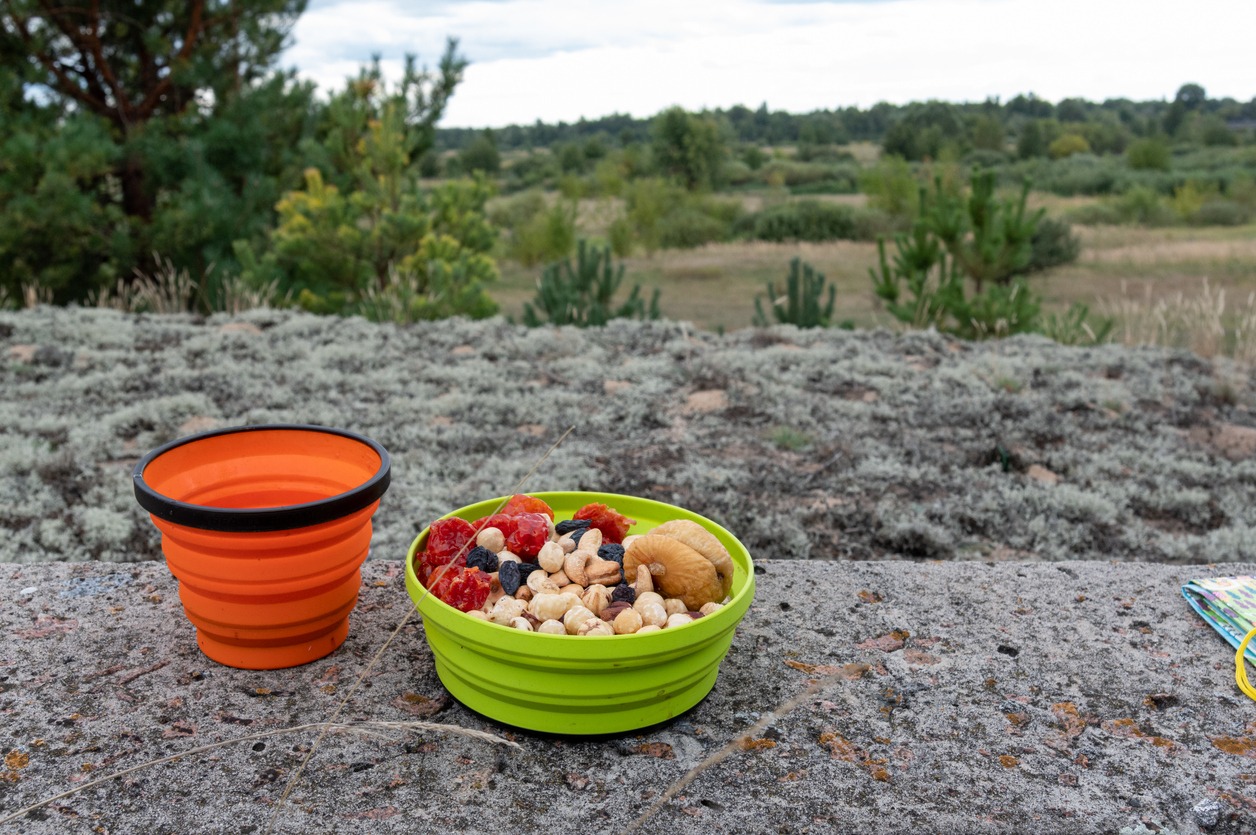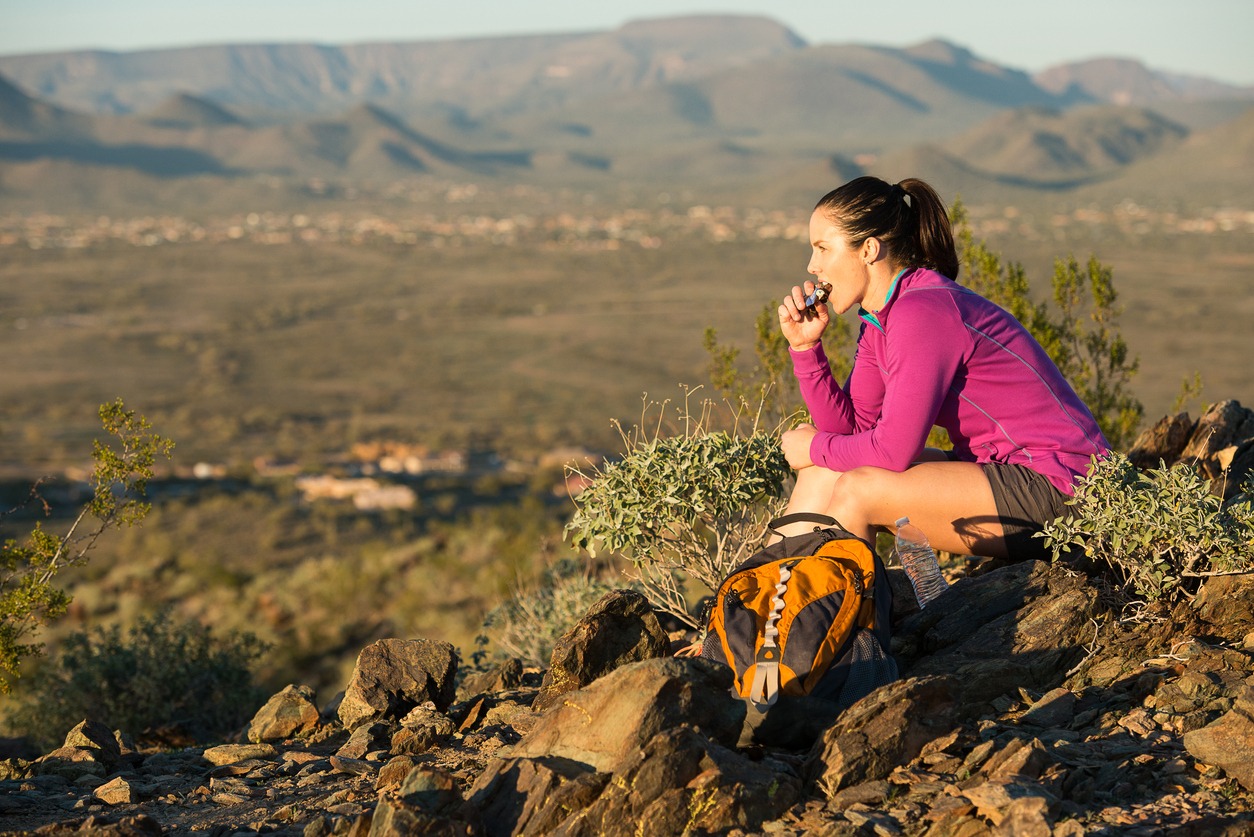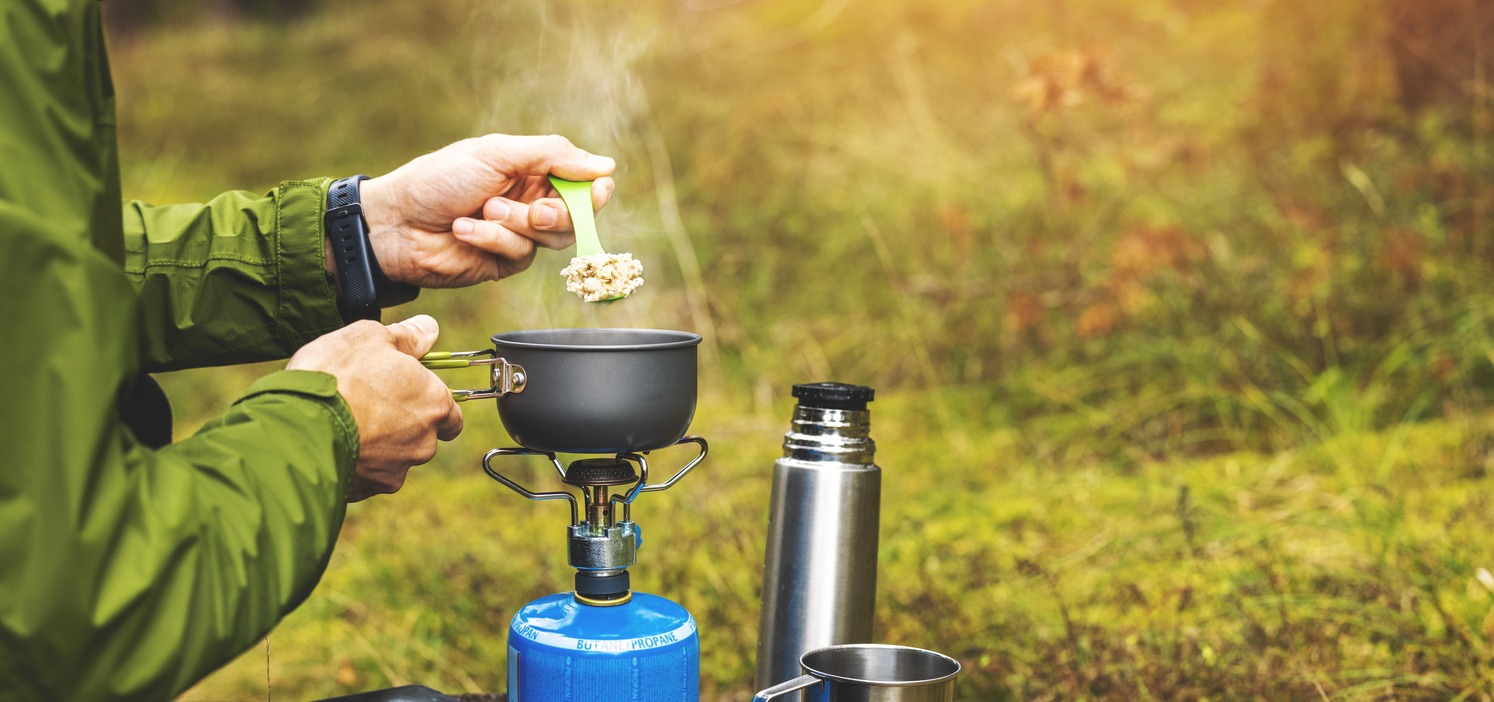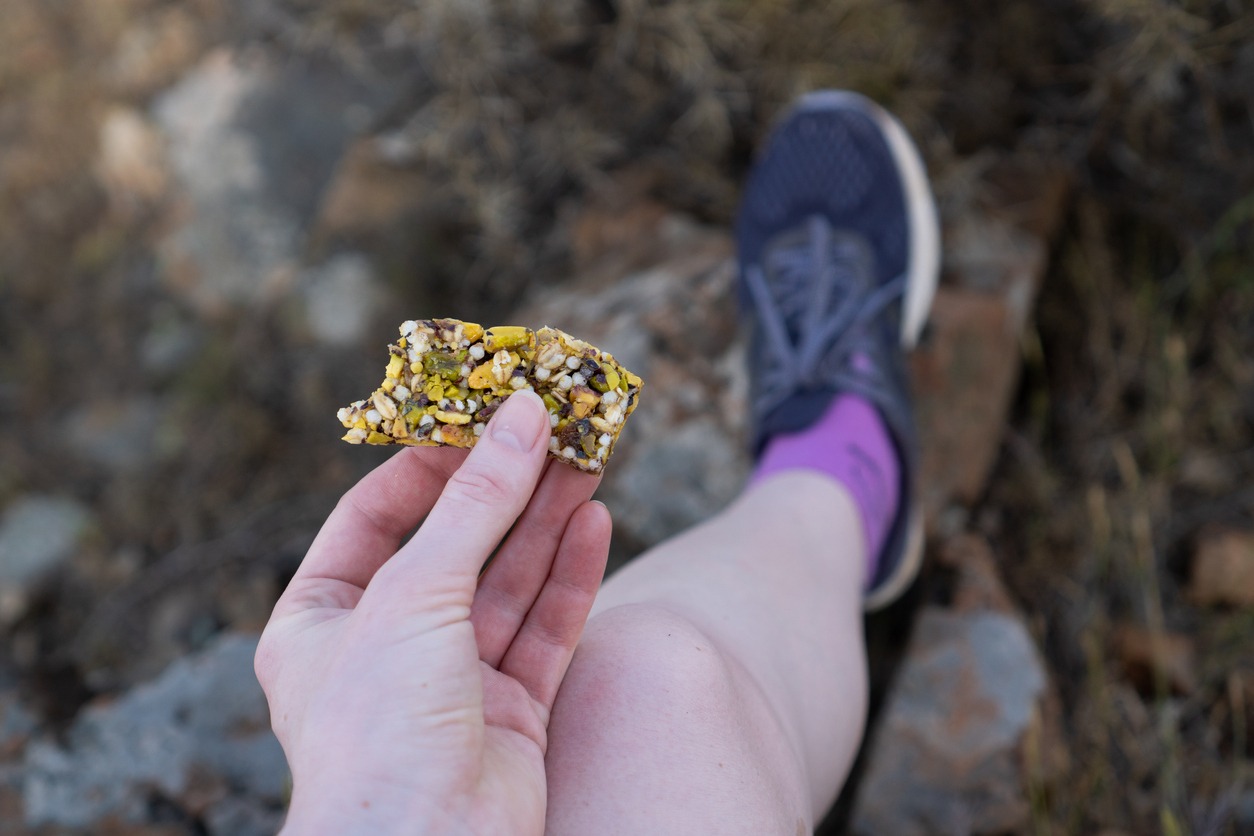Preparing the right meals and snacks is an integral part of a successful backpacking trip. As you’ll be burning lots of calories, you must carry ample food to fuel yourself as you explore the great outdoors. Generally, your food should be lightweight, nutritious, and calorie-dense. Also, it should be easy to prep and not spoil quickly without refrigeration. Not to mention that your food must also be delicious, a reward for most likely sacrificing many of life’s comfort for your adventures.
With that, the food you pack is crucial more than ever. While it’s easy to stash everything you see in your pantry, remember that optimal food for your backpacking pursuits requires some serious thought. But ease your worries! We’ve outlined some great meal and snack ideas for backpacking to help you stay in good shape during bus rides, forest hikes, and urban walks in your intended destination.
Meal and Snack Ideas for Backpackers
With all the clothing, gadgets, documents, and other gear you have to carry in your backpack, there’s only so much space left for food. Thus, you should plan properly and take in only suitable meals and snacks for your trip. To make things easier, here are some of the best meal and snack ideas for backpackers like you:
1. Dried Meat and Jerky
You must avoid fresh meat, as it perishes quickly if not refrigerated. Some great alternatives to fresh meat are hard-dried meat like summer sausage, pepperoni, and salami, and various types of jerky like chicken, turkey, beef, and even salmon and tuna varieties.
As most of the moisture is drawn out during the drying process, these foods are very shelf-stable, lightweight, and don’t need refrigeration, making them ideal for backpacking. No heating is also required, so you’ll have a quick source of protein whether you’re deep within the ravines or ascending the mountain.
2. Protein Bars
Same with endurance athletes, backpackers must boost their protein intake to encourage muscle repair and ward off hunger during the trip. Aside from dried and meat jerky, protein bars are other portable, shelf-stable sources of high-quality protein. You can count on protein bars to be lightweight, but they are very nutritious and calorie-dense, helping keep your energy up when you’re out and about.
What’s even great about protein bars is that they can fit a variety of dietary preferences, including vegetarianism and veganism. Just make sure to find products with limited, whole-food ingredients and veer away from ones containing artificial colors, sweeteners, and flavors.
3. Dried Fruits
Unlike fresh fruits, which are also highly perishable, dried fruits have long shelf lives and are very heat-stable. Excess water is eliminated during the drying process, which in turn, prevents bacterial growth that causes food spoilage.
Despite being dried, they keep many of the nutrients they contain. Thus, making them an excellent source of vitamins, minerals, fiber, carbs, and antioxidants. For example, dried apples have protein, vitamin B3, and vitamin B5, as well as copper, selenium, and iron. Meanwhile, sun-dried raisins have high antioxidants, soluble fiber, and potassium levels.
Meanwhile, dried fruits are compactable, allowing you to store them easily in your backpack.
4. Nuts and Seeds
Nuts and seeds are portable, convenient snack options for backpacking. Both are rich in vitamins, minerals, fiber, protein, and healthy fats, which are all you need to stay fueled. Though small in size, they’re very high in calories, making them great for replenishing lost calories you burn, especially during multiple hours of hiking in difficult terrain.
You can combine cashews, almonds, walnuts, pecans, sunflower seeds, pumpkin seeds, dried fruit, and granola to create trail mix, a snack mix specifically developed to be taken along by travelers as quick calorie boosts on hand. Alternatively, you can purchase ready-made packs if you don’t want to make your own. Either way, they don’t take up much weight and space and fit easily in your backpack.
5. Instant Oatmeal
One of the easiest meals to prepare when backpacking is instant oatmeal. Oatmeal is packed with B vitamins, manganese, magnesium, and fiber. Plus, it’s a filling source of carbohydrates. Stash in a few oatmeal packets, add hot water, and you’ll have a warm, healthy breakfast or snack in no time.
Just be careful, as some brands of instant oatmeal are loaded with sugar and artificial ingredients. Always check the label to see if the products contain only healthy ingredients with minimal to no added sugar. Don’t worry, you can simply add dried fruits or raisins, which are healthier sources of natural sweetness. Alternatively, you can add nuts or seeds to get an extra dose of protein to keep you pumped up throughout the day.
6. Nut Butter
Nut butters like peanut butter or almond butter are tasty, nutritious, and popular food items for backpackers. They are high in fiber, protein, calories, and healthy fats, making you feel full for extended periods and providing the energy you need for your trip.
Just note that you must opt for natural nut butter, not ones added with sugar and unhealthy ingredients. As lugging a large jar of nut butter is a big no-no, you should also purchase dehydrated nut butter or nut butter packets.
Yet, it’s still better to make homemade nut butter using a food processor or blender instead. Homemade nut butters are easy to make, more delicious, and cheaper. Plus, they’re very versatile as you can add them to other food for a heartier meal.
7. Dehydrated Meals
Though dehydrated meals don’t come into the picture when thinking about healthy and tasty meals, a great array of nutritious options are available, especially for backpackers looking to have a warm meal during their trip.
You can find many stores that offer dehydrated meals for breakfasts, lunches, and dinners, containing different high-quality ingredients like poultry, meat, vegetables, fruits, and grains.
What’s surprising for many is that these dried components retain nearly all their vitamins and minerals as long as they’re properly processed. Make sure to thoroughly read the labels to ensure you’re getting a healthy product.
Dehydrated meals are available in lightweight foil containers, making them easy to stash in your backpack. They can also be cooked by simply adding boiling water and letting it sit, allowing you to enjoy a delicious meal and feel energized longer.
8. Hard Cheeses
Like dried meats and fruits, hard cheeses, such as aged cheddar, gouda cheese, and parmesan, are also shelf-stable and can last a few days without refrigeration. They’re an excellent source of calcium, phosphorus, B vitamins, healthy fats, and protein, making them a go-to choice for many backpackers. Plus, they’re also versatile. You can use them to add a tasty pop of flavor to meals or enjoy it as a snack along with dried fruits.
9. Whole Grains
Whole grains, such as farro, buckwheat, farro, and oats, contain high amounts of vitamins, minerals, fiber, and complex carbohydrates. Apart from their amazing nutritional content, they’re portable and shelf-stable, making them ideal for backpackers. You can eat them any time of the day, and they’re also very easy to prep over a fire, which is one of the most common ways of cooking when backpacking. Try to purchase whole grains in bulk to save on the cost and make food planning easier for future trips.
10. Powdered Milk
You cannot bring fresh milk, but it doesn’t mean you cannot enjoy all the healthy nutrients milk offers just because refrigeration isn’t available on the trail. You can always bring powdered milk, which like its fresh counterpart, is also rich in B vitamins, calcium, phosphorus, potassium, and protein. You can add them to your instant oatmeal, dehydrated meals, or snacks if you need a boost in calories and nutrition.
11. Coffee and Tea
Coffee and tea are potions of life and not only at home but in the great outdoors as well. Having a warm cup of tea or coffee in the morning while you’re backpacking is an excellent way to stay caffeinated, focused, and energized throughout the day. Instead of single-use packets, opt for lightweight bags of coffee or loose-leaf tea, as they pack efficiently and reduce waste. If you want, you can even add powdered milk to give your coffee a creamy kick.
12. Poultry and Fish Packets
If you want a high-quality protein and healthy fats source, your best bet is to bring chicken, tuna, salmon, and sardine packets. They’re also packed with iron, B vitamins, and other nutrients that you need to keep your body in tip-top condition.
Unlike canned poultry and fish products, these pouches are light and won’t take up much space in your backpack. Not to mention that you also don’t need to fret about bringing a heavy can opener. Just tear the packet and eat it on the go.
13. Beans
Fiber, magnesium, zinc, selenium, B vitamins, and iron are found in beans. What’s great is that they don’t require refrigeration, so that you can bring them on your trip. Instead of heavy, bulky canned beans, go for beans in foil packets as they are lighter and more compact.
Whether you prefer kidney beans, black beans, chickpeas, pinto beans, or other types of beans, bringing beans is a smart choice, as you can add them to almost any meal, whether hot or cold.
14. Powdered Hummus
Powdered hummus may not be a popular idea, but you’d be missing out a lot if you skip adding it to your backpack prior to your adventure. It is high in protein, fiber, calories, and healthy fats. Hummus also pairs well with different kinds of snacks, such as crackers, pretzels, or vegetables, or you can simply eat it with a spoon. Simply add water, and you’ll have a perfect light lunch in a breeze.
15. Dark Chocolate
Backpacking doesn’t mean you can’t satisfy your sweet tooth. A healthy option is dark chocolate, which is chock-full of caffeine and antioxidants whilst being low in sugar. You can enjoy a few squares as a tasty snack or mix them with some pieces of dried fruit, nuts, and seeds for a more satisfying treat, especially after a long day outside. However, be wary that chocolate melts, so pack it accordingly in foil or ziplock bags.
16. Tortillas
Tortillas are an ideal backpacking bread. They will easily last a few days without getting moldy, drying out, or sticking together too much. They also lay flat and compact and can endure some rigorous handling while on the trail. Tortillas are an excellent vessel for many other food items. You can add cheese and hummus to your tortillas for a tasty breakfast or snack, use chicken or salmon for a protein-rich lunch, or spread nut butter for a delicious dessert.
17. Dry Food
Instant noodles, soup mixes, rice, and other “just-add-water” dry foods are also suitable additions to your backpacking food list. They are lightweight and will take up hardly any room in your backpack. Combine them with beans, noodles, and cheese, and you can transform them into ingenious, delicious backpacking meals.
18. Spices
While spices like turmeric, salt, lemon pepper, cumin, garlic powder, chili flakes, and paprika are not meals or snacks per se, make sure to bring some on your backpacking trip. They can infuse boring meals with fantastic depth and flavor, especially if you’ve been eating out the same meals again and again. Aside from that, most spices boast powerful nutrition benefits as they are packed with lots of antioxidants that reduce the risks of heart disease and certain types of cancer. Moreover, spices will only eat up a tiny amount of space, which is a huge plus when backpacking.
How Much Food to Take for Backpacking?
A common question that comes into the minds of most backpackers when planning their trip is how much food actually to bring along.
The general rule is that a person should consume 1 ½ to 2 1/2 lbs. (2,500 to 4,500 calories) of food each day, split on breakfast, lunch, dinner, and snacks. Yet, the total amount of food to bring varies per individual and per trip, given that many factors actually affect how much you’d be packing. To help you decide, you must consider the following:
How long will you be out? More days require more food, but make sure to consider the meal you’ll eat at the start of the activity and after the trip.
How intense is the activity? If you’re doing a 10-mile hike on rugged terrain with a 3,000-foot ascend, you’ll obviously burn a lot of calories. That means that you’ll also need more food than you would when taking a flat, easier trail.
How big is your group? Meals and snacks can be much simpler if you’re backpacking solo, but if you’re traveling with other backpackers, decide if you’d be sharing meals with others. One advantage of going with a group is that you can split the weight of the food, backpacking stove, fuel, and other cookware.
Most beginners in backpacking tend to bring too much. That’s pretty understandable, as who ever wants to go hungry in the middle of their trip? Yet, a downside is that bringing lots of food can considerably add weight, slow you down, and damper your spirit. Just use the factors stated above, and you’ll go a long way.
Quick Tips When Meals and Snacks for Backpacking
1. Bring food you’d like to eat.
A common mistake by many backpackers is converting their taste preferences to suit the types of food available in the backcountry. While it doesn’t mean you shouldn’t be trying new things, it’s important that you have comfort food with you, so you’ll have something to look forward to enjoying after a strenuous hike, arduous climb, or a long stroll.
2. Ensure variety.
To stay motivated further, ensure that there’s a good variety in the types of food you’ll be packing. Strive to have a balance of textures and flavors. Bringing food items that are soft, crispy, chewy, crunchy, or crumbly, as well as sour, sweet, salty, and spicy, will keep your palate satisfied. Food should also be varied in terms of nutrition. See to it that there’s also a balance in protein, carbohydrates, and fats to stay healthy on your trip.
3. Dehydrate and dry your own meals.
Though it will require more time and effort, dehydrating and drying your food for backpacking is a good way to save money and weight in your backpack. You’ll have full control of what goes into your food, making it easier to ensure that what you’re getting is good for you sans any unhealthy ingredients.
4. Make sure you have access to water.
Some of the food items listed here require water for cooking. So, you’d better check if you’ll have water access on where you’re going as it can greatly influence what types of food you’d be bringing. It’s better if there’s a water source along the way. If not, pack plenty of water and plan your food accordingly.
5. Incorporate fresh foods.
While refrigeration isn’t an option as it’s among the luxuries you’ll sacrifice when backpacking, it doesn’t necessarily mean you need to live with packaged or processed food. You can always include a few fresh foods into your backpacking food list. Consider adding fresh items that won’t perish quickly like oranges, apples, carrots, broccoli, onion, and bell peppers. They add a considerable weight, but you can always have them as great starters in your multi-day trip.
6. Weigh the costs.
Energy foods and freeze-dried meals tend to be expensive. It’s little wonder as you’re paying for their convenience. However, they can hurt your budget, especially if you’re backpacking for multiple nights or engaging in a series of trips. Again, always purchase in bulk and consider dehydrating your own food to save up on costs.
Takeaway
Never let your food for backpacking go by the wayside. Use these meal and snack ideas to ensure that you’ll have sheer fun, stay healthy, and keep fueled on your adventures. Happy backpacking!




